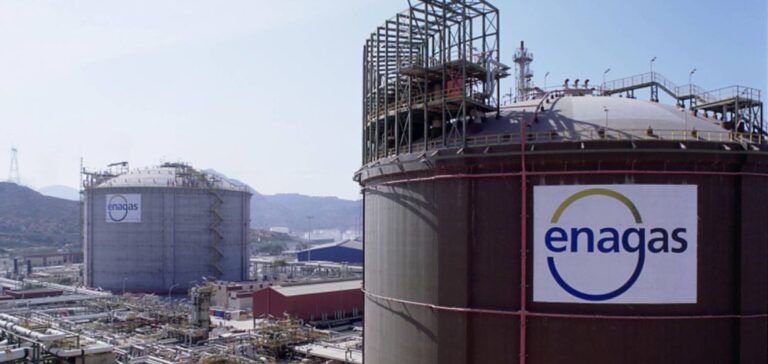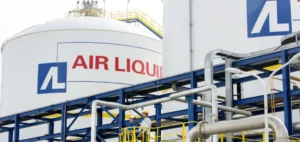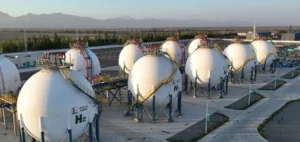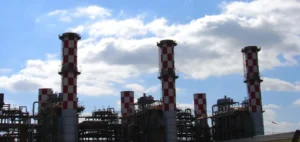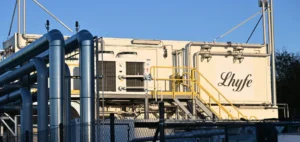Enagás Renovable and Naturgy have presented a project for the construction of a renewable hydrogen plant in La Robla, Spain. With a production capacity of up to 280 MW, this new plant will be located on the site of the old Naturgy thermal power plant. Enagás Renovable and Naturgy have created the Robla Hub joint venture to carry out the project. The start-up is planned for 2026 and the investment is estimated at 485 million euros. The presentation ceremony was attended by many important political and industrial figures from the region.
The characteristics of the renewable hydrogen production plant
The development of the renewable hydrogen production plant in La Robla will be associated with the start-up of a solar photovoltaic production project, consisting of several parks located in neighboring municipalities, with a total capacity of approximately 450 MWp. The plant’s electrolysis capacity has increased from 60 MW to 280 MW due to the presence of potential industrial consumers in the area and the proximity of the future hydrogen pipeline backbone.
The project’s contribution to the energy transition in Spain and Europe
The project aims to be a vector of local development by supporting the decarbonization of activities in the region. The La Robla renewable hydrogen production plant will also contribute to the decarbonization of industrial processes and the development of sustainable mobility by avoiding the emission of more than 430,000 tons of CO 2 into the atmosphere per year. The project is aligned with the European Union’s decarbonization objectives and the Spanish roadmap on the fight against climate change.
This project reinforces Enagás Renovable and Naturgy’s commitment to the energy transition and will support the decarbonization of the region’s industries, which will also be able to benefit from the efficiency gains generated by the increased production capacity. The project is eligible for the various calls for applications for subsidies available at the national and European level for the development of renewable hydrogen.
The political and industrial personalities present at the presentation of the project
The presentation ceremony was attended by important political and industrial figures in the region, including the Secretary of Energy of the Ministry of Ecological Transition and Demographic Challenge, Sara Aagesen, the Delegate of the Government in Castilla y León, Virginia Barcones Sanz, the mayor of La Robla, Santiago Dorado Cañón, the director of the Institute for a Just Transition, Laura Martín Murillo, the president of the Provincial Council of León, Eduardo Morán Pacios, the Director General of Energy and Mines of the Government of Castilla y León, Alfonso Arroyo González, and the sub-delegate of the Government in León, Faustino Sánchez Samartino. The project was presented by the CEO of Enagás Renovable, Antón Martínez, and the director of new businesses of Naturgy, Silvia Sanjoaquín.
In conclusion, the project to build a renewable hydrogen plant in La Robla, Spain, is an important step in the energy transition of the country and of Europe. This project is aligned with the European Union’s decarbonization objectives and will contribute to the decarbonization of industries in the region. The presence of important political and industrial personalities at the presentation testifies to the importance of this project for the region and for the country as a whole.


